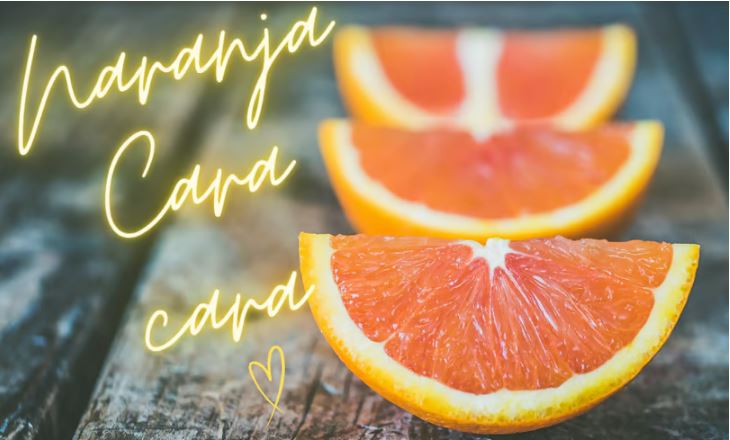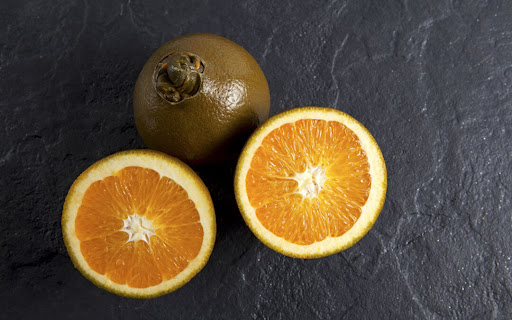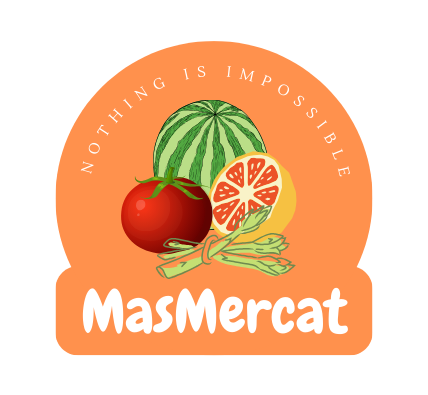Navel Cara - Cara orange, highly appreciated by the Nordic people
A variety of the navel orange, since its introduction in the 1970s, has gradually earned a special place among Nordic tastes, due to its sweetness and low acidity.
One of our clients in Germany said regarding the taste of Cara Cara Orange: “Mega Geil… ist SPITZE”, which means it’s the best. That’s why we have decided to dedicate this publication to this variety, where we will focus on its origin and the characteristics that make it so appreciated.
Originating in the 70s
The Cara Cara Orange, scientifically known as Citrus sinensis, is a variety of orange that originated in Venezuela. Its name “Cara Cara” comes from the Cara Cara plantation, where it was first discovered in the 1970s. But it wasn’t until it was cultivated in California, USA, that it began to be known and appreciated. It has gained popularity worldwide due to its sweet and aromatic flavor, lower acidity, as well as its high nutrient and antioxidant content.
A citrus variety that, since its introduction to the Spanish market in the 70s, has gradually gained a place in preferences in Nordic countries.
From the Navel family, what sets it apart?
What makes the Cara Cara Orange stand out among other varieties is its internal color. While most oranges have an orange pulp, the Cara Cara surprises with a pinkish hue. This distinctive tone is due to the presence of lycopene, the same antioxidant responsible for the red color in tomatoes and watermelons. It could easily be mistaken for a grapefruit; however, its sweet and acidic flavor gives it away. Its tender and juicy pulp makes it an irresistible bite.
The pleasure of enjoying a Cara Cara Orange goes beyond its delicious taste. This variety is loaded with health benefits. Like most oranges, its vitamin C content strengthens the immune system, while its fiber contributes to digestive health. Additionally, the presence of antioxidants such as lycopene and vitamin A helps combat free radicals, promoting healthy skin and slower cellular aging.

A Touch of Freshness and Flavor.
In Mediterranean cuisine, known for its fresh ingredients, the Cara Cara Orange has found its place of honor. From salads to main dishes, this orange has been creatively integrated into various recipes, bringing its sweetness and unique citrusy touch.
The Cara Cara Orange is characterized by its durability in storage; the production season runs from late November to late April. It is smaller in size compared to other varieties.
It is one of the varieties that is most often exported to Nordic countries, bringing its citrusy touch in the winter season and gaining space for its versatility in international cuisine, available for consumption in the Valencian fields. Discover the pleasure of this Cara Cara Orange and bring Mediterranean freshness to your table!
Autor: Selene.
Chocolate Navel Orange: From being an almost forgotten variety in Spain to being recovered as a gourmet fruit
From the navel orange family, the Chocolate Navel Orange stands as a variety that has conquered palates with its exquisite flavor and distinctive aroma.
Result of a natural mutation of orange trees, it has been recovered by some farmers in the Mediterranean region in the Valencian Community, in the town of Picassent (L’Horta Sur) and has made a place for itself among the most demanding palates.
The Chocolate Navel Orange, scientifically called Sinensis Citrus, stands out for its peculiar brown color resulting from the permanence of its green and orange pigments once ripe, in addition to a high degree of sweetness, reaching 12 brix, which leads it to be considered the sweetest of the navels, with a low acidity flavor. Among other characteristics worth highlighting is the high percentage of juice, its fine, shiny, soft and grainy skin, which gives way to easy peeling, from which a combined aroma of fruity and floral notes is released. Its size is medium to large within the Navel family, with a uniform rounded shape.

The perfect balance between acidity and sweetness makes this orange a versatile ingredient for a wide range of culinary preparations.
From jams and desserts to salad dressings and juice, Navel Chocolate Orange provides a distinctive touch that elevates any dish to another gastronomic level, as well as its natural consumption, the fruit itself, is already a pleasure.
Currently it is not easy to find in the local market, since it is grown only by a few Valencian farmers, who are betting on this ancient variety for export. But it has made a place in the palates of some countries worldwide, Holland was the first to import it in 2021 and expand it to some countries in Europe. It is currently considered a highly profitable product, due to its high price, driven by product scarcity, in addition to its low production costs compared to other citrus fruits affected by more pests, giving it a greater profit margin.
Orange also offers a number of health benefits. Rich in vitamin C, antioxidants and fiber, this fruit not only delights the palate, but also contributes to general well-being. Vitamin C strengthens the immune system, antioxidants fight free radicals and fiber promotes digestion, making Chocolate Navel Orange a delicious and nutritious option.

Chocolate Navel Orange is not only a delight for the senses, but also a nutritious addition to a balanced diet. Available in the winter season and early spring.
Its fascinating origin, its peculiar characteristics and its health benefits make it a fruit that will give that cheerful and tasty touch to our winter menu.
Autor: Selene.
Oranges: Nature's gold for your well-being
The orange is one of the most consumed fruits in the world, but do you know its origin and how it came to our markets? In this article we tell you the history of orange consumption, its properties and benefits when consuming it.
The orange is the fruit of the orange tree, a tree in the Rutaceae family that is believed to have originated in Southeast Asia about 4,000 years ago. The first records of orange cultivation date back to ancient China, where it was considered a symbol of prosperity and good luck. Arab traders introduced the orange to the Mediterranean in the 10th century, and from there it spread throughout Europe thanks to the crusades and voyages of exploration.
The orange we know today is the result of hybridization between the bitter orange and the mandarin, which was produced naturally or artificially sometime between the 15th and 17th centuries.
The sweet orange became popular for its pleasant flavor and its high content of vitamin C, which helped prevent scurvy, a disease caused by a lack of this vitamin. The orange was also used for medicinal, cosmetic and culinary purposes.
Today, the orange is one of the most produced and exported fruits in the world, with China, Brazil, India, the United States and Mexico as the main producing countries. The orange is mainly consumed in the form of juice or whole, but its peel is also used to make jams, sweets, liqueurs and essential oils.

Orange has numerous properties and health benefits, among which are:
-
It is a source of vitamin C, which contributes to the normal functioning of the immune system, the formation of collagen for the skin, bones and cartilage, and the protection of cells against oxidative damage.
-
It contains other antioxidants, such as flavonoids and carotenoids, which help prevent premature aging and protect against some chronic diseases.
-
It provides fiber, which promotes intestinal transit and the feeling of satiety.
-
It has an alkalizing effect, which balances the body’s pH and prevents acidosis.
-
It is diuretic, purifying and anti-inflammatory, which facilitates the elimination of toxins and retained fluids.
-
It stimulates the production of saliva and gastric juices, which improves digestion and prevents ulcers.
-
It has antiseptic and antibacterial properties, which helps fight respiratory and oral infections.
-
It is rich in folic acid, which is essential for the development of the fetus during pregnancy.
As you can see, the orange is a very complete fruit and beneficial for your health. We recommend that you include it in your daily diet, preferably fresh and whole to take advantage of all its nutrients.
Autor: Selene.



